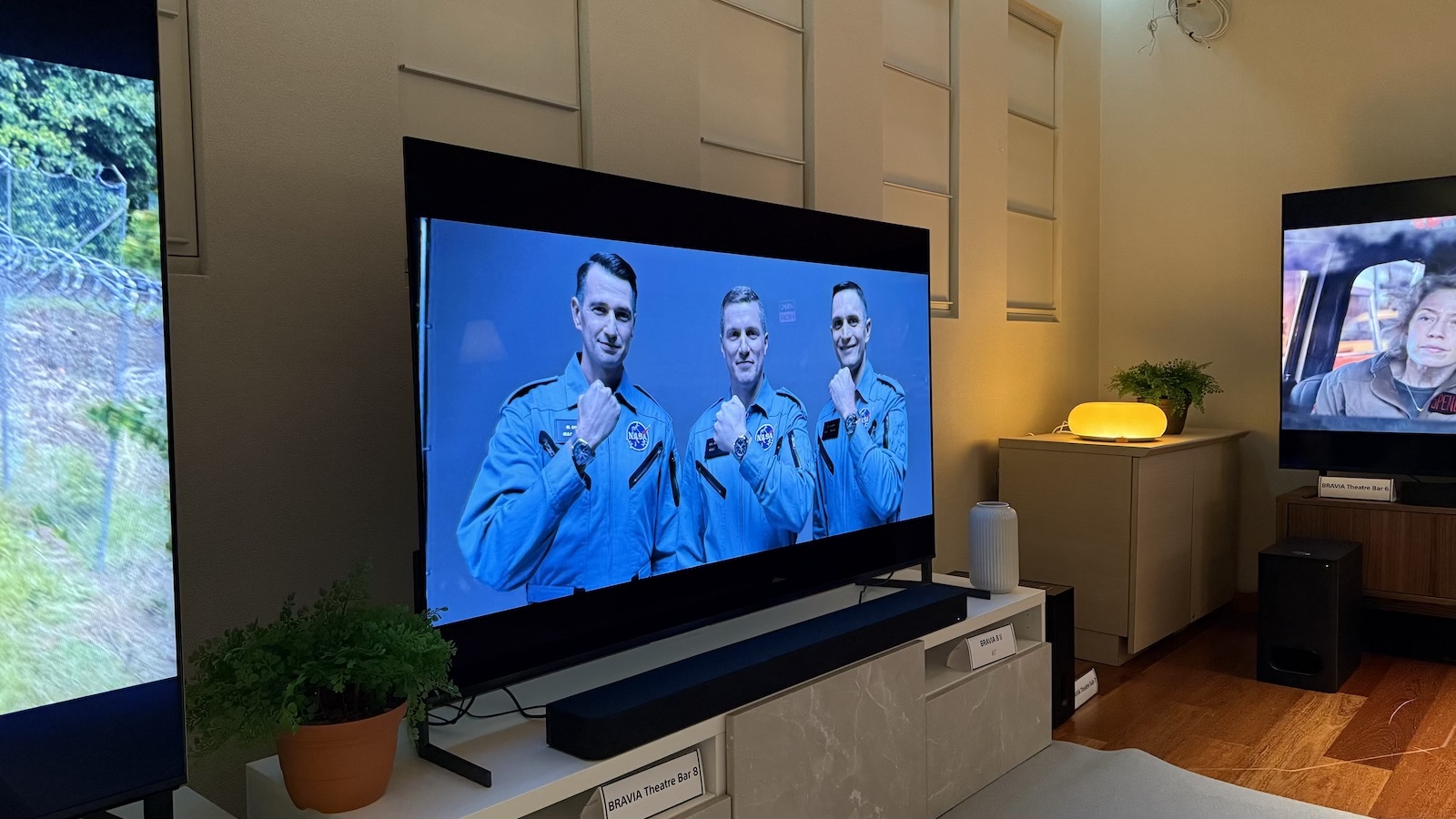MUNICH SHOW 2011: More streamers, mad speakers, comebacks, throwbacks, 1920s horns and the RemoteTaxi
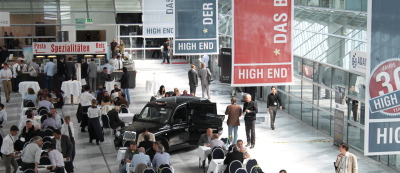
OK, so the big news of the 2011 High End Show, which closed yesterday in Munich after its four-day run, was that KEF's Concept Blade speakers aren't a concept anymore: they're going on sale this summer, at £20,000, as part of the company's 50th anniversary celebrations.
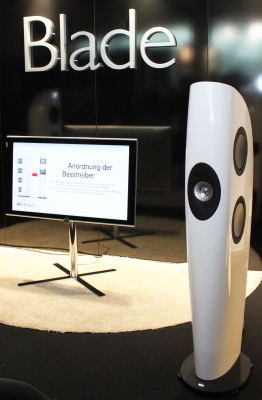
The Blade was the centrepiece of the KEF room, but really something of a second bite at the same cherry: after all, the Concept Blade was what the room was all about in 2009, too.
And the cynical might say that's one of the small weaknesses of what is, after all, the best show of its kind in Europe, if not the world: the same companies tend to have the same rooms, year after year, and some seem content to mount much the same display.
You'd have to look hard to see what had changed from last year's Avantgarde Acoustics room, for example, and while turntable manufacturer Transrotor's room always looks fabulous, with its heavy metal decks and artful plant arrangements, arguably it also always looks the same.
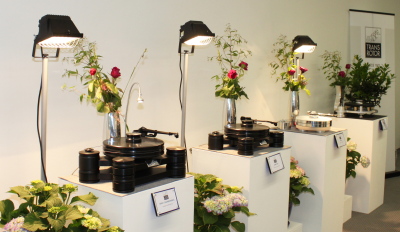
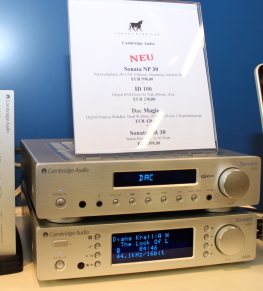
And things aren't helped when products claim to be new for a second year in a row: the Cambridge Audio NP30 streamer was marking its show birthday with another 'Neu' sign, although at least it now looks as though it may eventually be about to hit the shops.
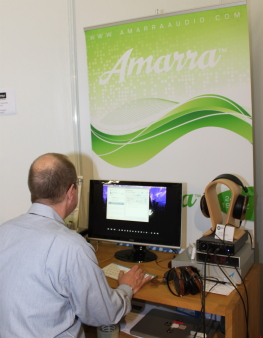
However, even this delayed streamer is indicative that the show is changing in a very big way.
In fact, anyone who thinks high end audio is entrenched and resisting computer-stored audio would have to do a major rethink after a day or two in Munich.
Get the What Hi-Fi? Newsletter
The latest hi-fi, home cinema and tech news, reviews, buying advice and deals, direct to your inbox.
Exhibits are as likely to be run from a computer and controlled by an iPad as sourced from vinyl or CD, and just about every manufacturer has a streaming or storage solution.
This, for example, is the 111 server/streamer from German high-end company Burmester, while Weiss Audio, manufacturer of high-end DACs, is getting in on the storage act with its MAN202 (below).
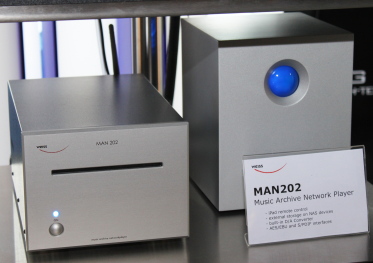
And the Chinese audio industry is in on the act, too: the Linear 7 from Opera-Consonance, below, has a familiar look,
while the company also has a more classically-styled Wi-Fi-capable 192kHz/24-bit DAC, the Linear 8. Both units are controlled using an iPad app.
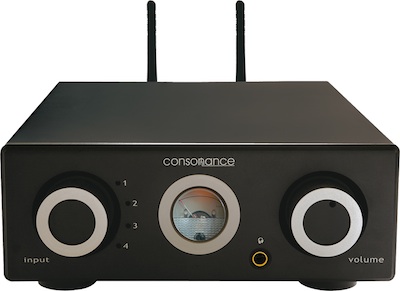
NAD also has its own streaming music player on the way:
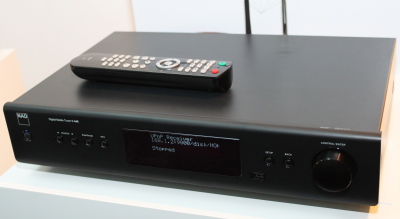
the C446 – and apparently not C446BEE as labelled at the show! – combines network streaming, internet/DAB/DAB+/FM radio and iPod/iPhone/USB connectivity, and will sell for around €800.
More to come in the news channel as soon as we have confirmation of UK availability and pricing.
Probably rather more expensive will be this server from French high-end audio guru Yves-Bernard André, who was also demonstrating the effect on speakers of some special cloth of his own formulation, place on top of the enclosure,
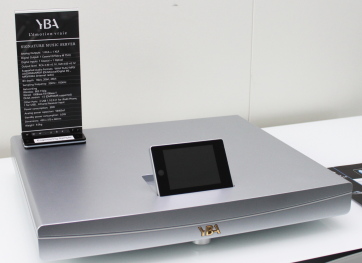
while the more affordable end of the market is being championed by Pro-ject, which is adding a complete streaming system to its Box range.
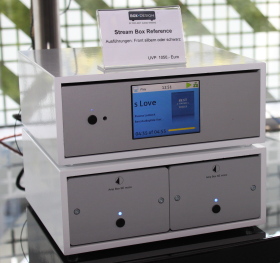
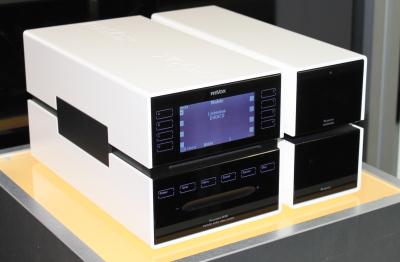
From Box to Revox, and the celebrated Swiss manufacturer has gone all modular with its Re:System design: it's a multimedia micro to which storage and other devices can be added to boost functionality.
And thinking the same way is another famous name, Telefunken: now revived, the brand was showing a neat streaming micro-system (below), and a compact portable streaming unit with HDMI connectivity.
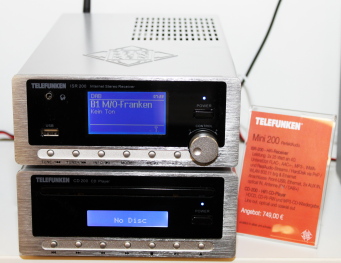
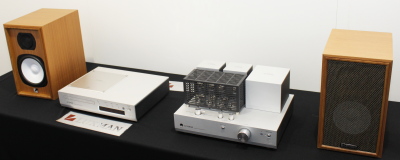
Talking of neat systems, this Luxman Neo Classico (above) was, for me, the star of the IAG stand: it combines a compact CD player, a valve amp complete with optional digital iPod dock, and lovely retro-looking speakers.
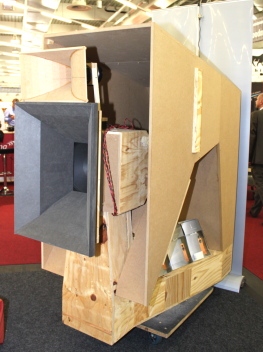
Neither lovely nor retro-looking were these massive horn speakers from Blumenhofer, standing about 2m tall and finished (if that's the word) in raw MDF.
But then the Munich show is known for speakers to appeal to the rather more extreme end of the audiophile market, and many of the models on display are as much exercises in technology as products actually designed for real people to buy.
There now follows a brief skate around some of the more striking designs I encountered.
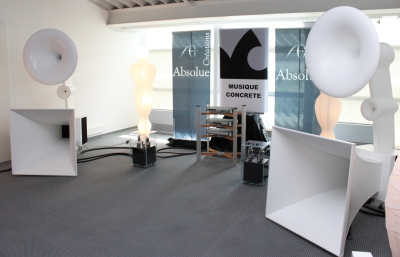
These monsters (above) are the Grande Castine from Musique Concrete, while below are the Equilibrium models from Färber Acoustics.
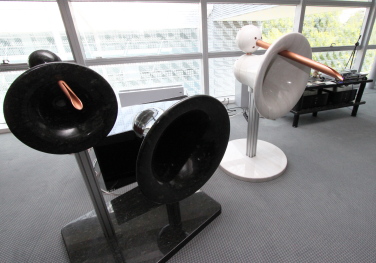
Yes, they do look like storks shouting through megaphones, and yes, you could have a small child's eye out with that copper tube, which is part of the treble system.
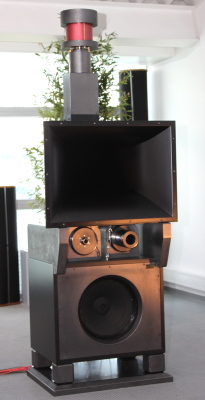
These Audio Tekne speakers (left) come from Japan, where they're made by a couple of former Japan Victor Company employees.
The design is modular, and the speakers can be bought in three- or four-way versions – although no-one quite managed to explain to me what the chimney was for!
(In fact, it houses the drive section of the horn, firing down into that large opening.
To give you an idea of the scale of the thing, that's a 38cm bass driver down below, and the main housing of the speaker is made from carbon blocks!)
Winner of the honours for most outrageous speaker, however, was Korean valve amp manufacturer Silbatone, as usual playing its products through items from its collection of vintage speakers.
This one (below) is based around a 1929 Western Electric 16A cinema unit, and was being talked about a lot as having one of the best sounds at the show.
Not the least coloured, perhaps, but certainly one of the sweetest and most effortless – and remember we're talking about speakers more than 80 years old, on the end of 18W valve amps!
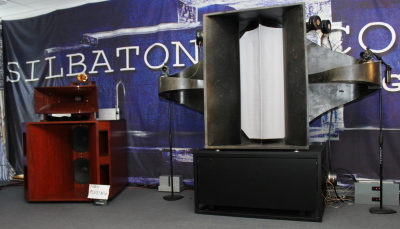
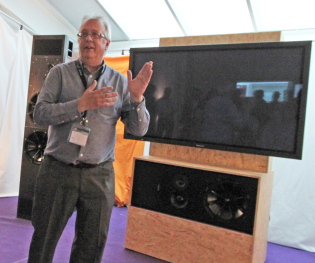
Giving it some more conventional speaker welly was PMC's Tom Barron (above), demonstrating a complete active BB5 surround system to celebrate the company's announcement of a standard 20-year guarantee on all new speakers sold since the beginning of this year.
Tom commented that one of his colleagues was missing the show as he was in Bermuda – I suspect he may have got the cooler and less humid option, as this was one of the hottest rooms at the show!
The programme included the inevitable Diana Krall, the Monaco race sequence from Iron Man 2, and an excerpt from a recent Stevie Wonder concert, which had been mastered on the same PMC speakers and sounded really rather spiffy.
I was also taken with the Boston Acoustics Axperience speakers (below), running on the end of an all-Marantz system.
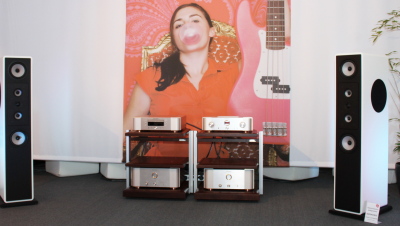
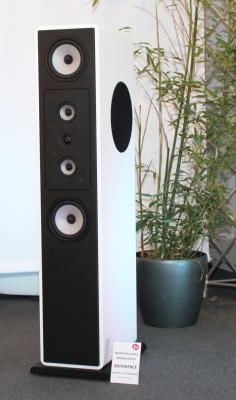
The striking white floorstanding speakers, with their side-firing bass unit, and midrange drivers and tweeter on a decoupled panel in the centre of the baffle, are an extension of the recent work on the company’s A-Series speakers.
They’ve been designed by Marantz Brand Ambassador Ken Ishiwata and consultant Karl-Heinz Fink, fresh from their work on those mainstream speakers, and while Ishiwata’s name will be familiar to many, Fink’s may be less so.
To put it simply, let’s just say his work is behind a surprising number of speakers currently on the market, from mass-market brands to some very specialist manufacturers.
So, are the speakers a production model or a concept? Says Ishiwata ‘Oh, we’ll make you a pair if you want them – but you’ll need around €20,000…’
Talking of things Marantz, we're expecting a full run-down of the company's new range, along with the latest Denon line-up and another demonstration of the Boston speakers, in a couple of weeks' time, but here's a preview of one of its new AV receivers.
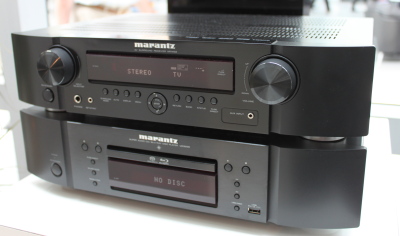
Seen here sitting atop the UD5005 Blu-ray player is the NR1402, the latest in the company's line of 'slim' receivers.
On sale in June at €499, it has a 5x50W output, Audyssey MultEQ, Dynamic EQ and Dynamic Volume, iPod input on the front panel, and 4-in/1-out HDMI 1.4a connectivity with HDMI pass-through in standby.
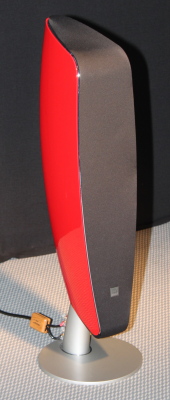
Also very impressive were the little Dali Fazon F5 speakers, priced at €1499 apiece, in line with common European practice of pricing speakers singly.
Standing just 92cm tall with an elegantly curvaceous, and extremely heavy, cast aluminium enclosure available in a choice of colours, these stylish speakers not only sounded excellent at the show, but looked superb, too.
They appear to do that magical thing of casting sound up above their floorstanding cabinets, and have plenty of weight and scale, not to mention clever twin cable connections for what Dali rather ambitiously calls a 'virtually wireless' effect.
In other words, the cables can be connected to the 'normal' speaker terminals or out through hidden ones in the stand, allowing them to be run under the floorboards.
Hmmm: Fazon F5 or KEF Blade? Compare and contrast...
Mind you, for all the talk about iPod/iPad apps and digital music at the show, one item I spotted combines apps and vinyl.
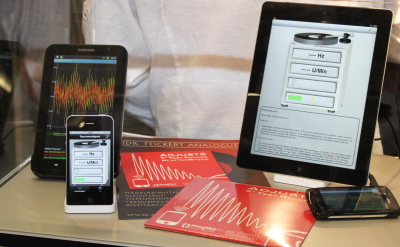
The free PlatterSpeed app, from Dr Feickert – the German vinyl wizards behind the amusingly-named Woodpecker turntable and much more – can be used to check your turntable is running at the right speed.
It works by using the handheld device and app – it's available for iOS and Android – to listen to a 3150Hz test-tone being played from an accessory record: the company has a 7in 'single' carrying the tone available for €15.
Finally, the eagle-eyed may have spotted the London taxi sitting in the atrium in the picture at the top of the story – no, it hadn't strayed just a bit too far 'sarf of the river', and neither was it a cunning plan for us to arrive in style at the show.
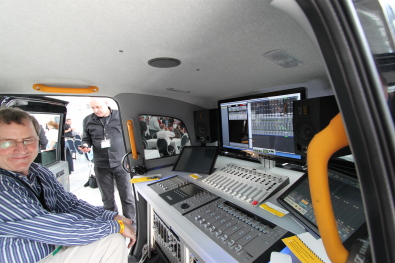
Actually, it's a RemoteTaxi: a complete recording control room built into the back of a cab, and using Adam nearfield speakers for monitoring.

It’s no gimmick, but rather a one of a fleet of highly mobile recording solutions being offered worldwide by the company, and already in use for making stereo and surround recordings on location, recently including Sting playing with the London Symphony Orchestra live in Berlin.
And while a recording studio in a taxi may seem a bit bizarre, let's end with something closer to the old-school spirit of the show – some mad turntables.
Step forward the Clearaudio Statement,
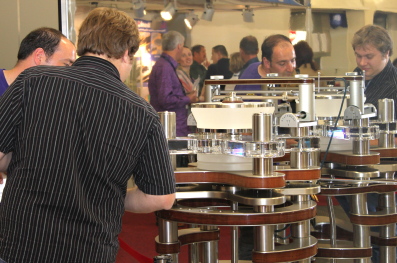
the Transrotor Artus
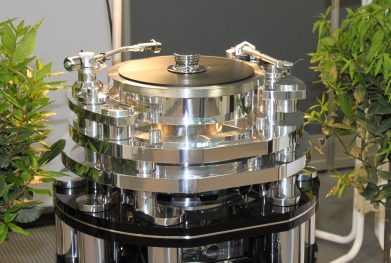
and, last but by no means least, the Acoustic Solid Bambus...
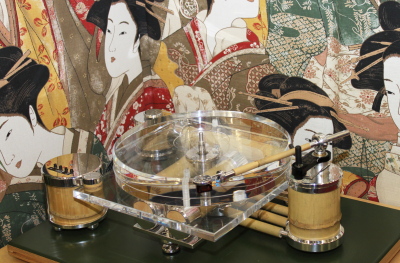
Oh, and for a brief video overview of the show, courtesy of Mrs E, click here.
Andrew has written about audio and video products for the past 20+ years, and been a consumer journalist for more than 30 years, starting his career on camera magazines. Andrew has contributed to titles including What Hi-Fi?, Gramophone, Jazzwise and Hi-Fi Critic, Hi-Fi News & Record Review and Hi-Fi Choice. I’ve also written for a number of non-specialist and overseas magazines.
